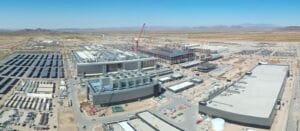Real estate holds a prominent place in many portfolios. Real estate investments can provide passive income as long as you hold an ownership interest. When deciding which properties to invest in, you have your pick of residential and commercial assets. Either route means managing tenants and property maintenance. Alternatively, you could take a less active role by becoming a silent partner or putting your money in real estate investment trusts.
But let’s say you’re considering commercial real estate opportunities. You want to diversify your portfolio while reaping the rewards commercial property investments can offer. You’re just not sure how to spot a promising opportunity from a not-so-promising one.
Being new to the game can be intimidating, but learning how to analyze market trends is where it starts. When you know how to read the signs, you can be more confident in your ability to identify strong opportunities.
1. Evaluate the Right Market Factors
As you may have guessed, the real estate mantra of “location, location, location” applies in full force to commercial properties. The building’s surroundings and the local economy will influence a property’s potential return. Similar to residential properties, you’re looking for a type of curb appeal with commercial ones. But in this case, you want to assess a location’s ability to attract tenants and foot traffic.
One principal factor concerns the type of commercial activity. A mixed-use office building will usually be more of a draw downtown than on the outskirts of town. Likewise, a shopping center on a main thoroughfare near multiple residential developments will probably generate enough foot traffic. It’s a better bet than an older mall in a neighborhood with a declining commercial district.
Essentially, you’re looking at whether there’s enough accessibility and economic activity. Find out if the area’s population is growing and look at vacancy rates for comparable properties. Also, examine the local economy, including major industries, unemployment rates, and average household incomes.
Analyze the level of competition for the type of property you want to invest in. Will there be more demand for competing buildings, and how will new construction activity impact the market? If you don’t know how to read the data, Lifestyle Investing expert Justin Donald emphasizes the importance of mentorship. He says, “Surround yourself with successful business owners who know how to do what has to be done.”
2. Calculate Likely Return
The goal of any investment is to earn a desired rate of return. With stocks, bonds, and trusts, the process is less complicated. You can look up the investment’s historical and projected rate of returns because someone else has done the legwork. But with a commercial property, this data isn’t always readily available. You have to do some digging and number-crunching on your own.
Plus, there are plenty of variables with a commercial property. You’ve got to consider ongoing expenses, including insurance, taxes, and upkeep. Another factor is existing leases. In a shopping center, anchor store tenants may have longer leases on the books. Therefore, the rate per square foot they’re paying might be lower than current market rates.
Commercial property tenants are also often responsible for paying common area maintenance charges. In a nutshell, tenants pay their pro-rata share toward the property’s upkeep. Each lease’s stipulations regarding CAM charges will factor into how much net operating income you can earn from the property.
Some leases may not include CAM charges, depending on how much space the tenant occupies. The annual CAM reconciliation process may result in reimbursements or additional payments for over and underpayments. But overall, you’ll want to calculate the property’s potential net operating income by subtracting expenses from revenues. The age of a building, including the need for remodeling and equipment upgrades, is a critical element in determining costs.
3. Learn From the Past, Present, and Foreseeable Future
With any investment, there’s always some degree of uncertainty. In terms of commercial real estate, the unknowns include catastrophic weather events and rapid economic shifts. You can’t always foresee a major employer leaving town or new construction that makes a once-bustling neighborhood less attractive.
But you can look at a commercial property’s history, such as how often ownership has changed hands. The property may not be performing well if there have been frequent changes. The building’s general condition, vacancy rates, tenant quality, and economic activity can indicate whether you should pursue the investment.
A shopping mall with national chains and well-recognized names will be an obvious attraction. Tenant diversity can also indicate whether a shopping center will produce enough revenue. Some centers have outparcel buildings on the perimeter, such as dine-in and fast-food restaurants. A combination of food, clothing, and electronics means people will see the center as a one-stop shopping location. Tenant diversity contributes to the sharing of foot traffic and draw.
Of course, not every commercial property is a strip mall. However, the same revenue and return potential principles can apply to office spaces, warehouses, and manufacturing facilities. If big-name employers are moving into an area, they’ll need space. This move will also attract other real estate-related activity, such as an increased demand for housing and commercial buildings. Higher demand can raise market rates, including those for existing lease renewals.
Will My Investment Succeed?
With investments, success is often defined by your acceptable rate of return. What one investor finds satisfactory will differ from what another does. Your minimum rate of return might be 8%, but your desired return is closer to 12%. If you’re defining success by an 8% return rate, any commercial property producing this return will get the green light.
It all comes down to what you’re willing to put in and what you hope to gain. You might be happy to restore an older property, eventually attracting higher-quality tenants and revenue in the long run. Or you could need to make immediate gains, so a newer building with air-tight existing leases might be more appropriate.
As with any investment, real estate markets and properties contain the unpredictability factor. Outlining your goals, conducting sufficient research, and planning for the unexpected can help you make the best investment decisions. You’ll know how to tell when it’s time to dive in or divest.




